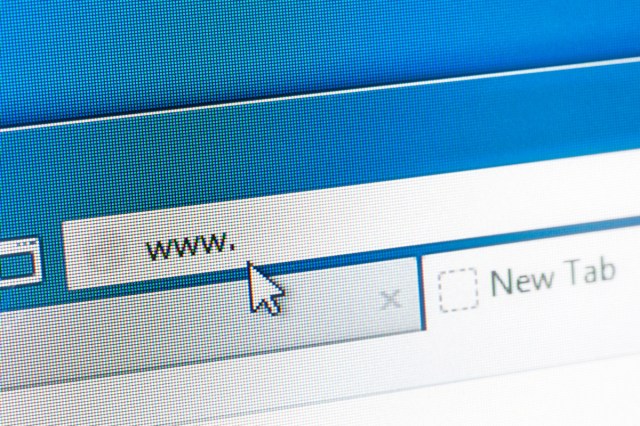
The World Wide Web’s Humble Beginnings
In 1989, British computer scientist Tim Berners-Lee was working at CERN (a French acronym for the European Organization for Nuclear Research) when he had a breakthrough idea that led to the creation of the World Wide Web. “There have always been things which people are good at, and things computers have been good at, and little overlap between the two,” Berners-Lee explained in 1998.
He noted that computers worked “mechanically in tables and hierarchies” while humans usually opted for “intuition and understanding.” He imagined a system that could bridge the gap.
Berners-Lee’s vision was to develop a way to view and link documents across different computers, using the internet as the backbone. He partnered with Belgian systems engineer Robert Cailliau on the project and coined the term “World Wide Web” in 1989 to emphasize the global reach and decentralized nature of the web. On a NeXT computer (designed by none other than Steve Jobs), the team created a network of hypertext documents viewable on web browsers.
By the time Berners-Lee was ready to launch in 1991, he had invented “HTML” (Hypertext Markup Language), “HTTP” (Hypertext Transfer Protocol), “URL” (Uniform Resource Locator), and, of course, the World Wide Web itself.

The World’s First Website
On August 6, 1991, the world’s first website, info.cern.ch, was launched by CERN. The site provided instructions for users to create their own web pages and explained the function of hypertext — coded text that links to content on the internet. Still active today, the site also now explains the history of Berners-Lee’s project.
By 1992, there were only 10 websites on the World Wide Web, but by the late 1990s, in large part due to the launch of Google, that number had ballooned to 2 million. Unfortunately, most early websites weren’t archived and have since vanished. In 2013, however, CERN revived its original site, unveiling what some may call a digital fossil of the early web. The resurgence of info.cern.ch brought about an interesting question: Why didn’t that URL include”WWW” or “HTTP”?

So Why Do We Use “WWW”?
The “WWW” in a URL is an abbreviation for “World Wide Web,” but contrary to what some may believe, this part of a URL isn’t actually necessary for a website to work. You could type in “google.com” instead of “www.google.com” and still land in the same place. That’s because “WWW” is more of a naming convention than a technical requirement: Back in the 1990s, it helped distinguish websites from other services, such as email servers.
Today, many websites omit the “WWW” completely, but it’s still widely used as a stylistic choice in certain instances, such as marketing and print materials. When featured on billboards, postcards, TV commercials, and magazine ads, “WWW” clearly signals that the address in question is a website.
Basically, while “WWW” isn’t essential anymore, it remains one of the most recognizable acronyms on the web, earning it a permanent place in internet tradition and history.
More Interesting Reads

What’s the Meaning of “HTTP” and “HTTPS”?
Another acronym often seen in website URLs is “HTTP,” but this one actually does serve a functional purpose. It stands for “Hypertext Transfer Protocol” — that is, a communication protocol allowing browsers and servers to exchange information and permitting users to access websites. It essentially acts as a set of rules that lets your browser “talk” to the server, enabling it to load text, images, videos, and everything else you see and hear on web pages. Without “HTTP,” the World Wide Web couldn’t function.
You may notice there is sometimes an “S” at the end of the “HTTP” acronym, which stands for “secure.” If a URL starts with “HTTPS,” it means the site in question encrypts your data. This adds a layer of security to protect users and safeguard sensitive information, including passwords and credit card numbers. Most websites today use “HTTPS,” and browsers may even warn you if a site doesn’t use it and therefore isn’t secure.

Are There Other URL Protocols?
While “HTTP” and “HTTPS” are by far the most commonly seen internet protocols at the beginning of web addresses today, they’re just two among thousands of others. These protocols generally fall into three main categories: communication, management, and security, with “HTTP” and “HTTPS” belonging to the security category.
Most alternative protocols are rarely encountered by everyday users, either because they serve technical functions or because they operate in areas of the internet that aren’t easily accessible to the public. That said, you may still have utilized a few of them while surfing the net. For instance, “mailto://” opens your default email application to start a draft addressed to the email in the URL, while “ftp://” transfers files between computers over a network.
So if you stumble across a URL that starts with something unfamiliar, it may not be a red flag for a dangerous site; it’s probably just a different protocol designed for a specific purpose. The internet is much more flexible than we probably realize and likely much more expansive than Tim Berners-Lee could have ever imagined.












